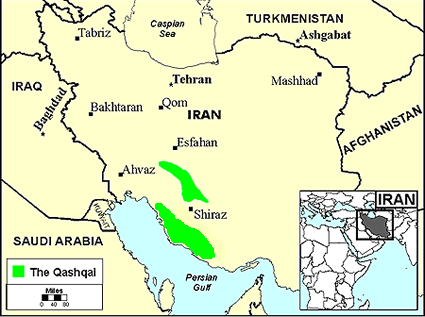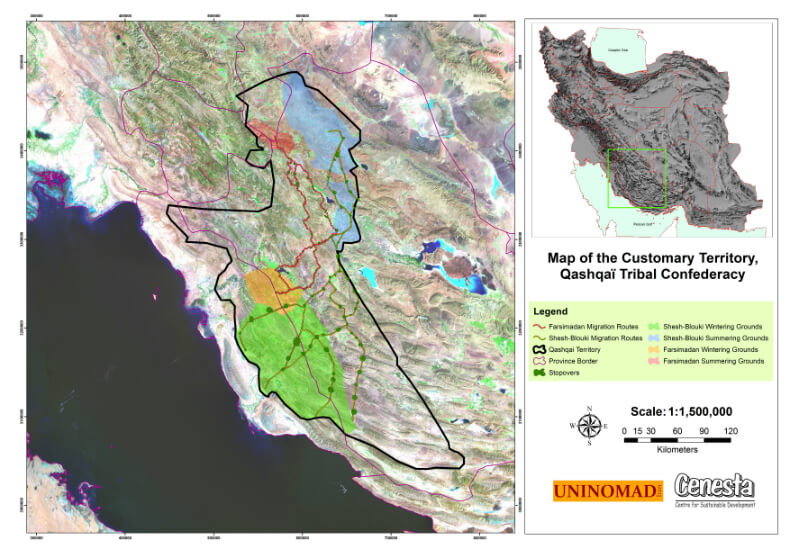WHO ARE THE QASHQAI AND WHAT IS THEIR MIGRATION?

Qashqai people or more specifically “the Qashqai” is a conglomeration of tribes of Iran that like many recent tribal conglomerations in Iran is a combination of several tribes with different heritages. The center of this conglomeration is in the Fars province, but due to the expanded region and lands they used to once roam, includes parts of other provinces as well.
The Qashqai generally believe that their ancestors came in to Iran from Turkestan (major parts of Central Asia) as precursors to the armies of the Mongolians – especially Hulagu Khan (the grandson of Genghis Khan) and Tamerlane. It is actually more probable that their entry to Iran was more a result of the major tribal migrations of the eleventh century AD. All speculations agree upon the fact that before entering the region of Fars, they have been present in northwestern Iran for a period of time. Very recently, there even was a tribe named Mughanlu in the Qashqai, which surely had been named after the Mughan valley north of Ardabil. It is also probable that the tribes of Agh Ghuyunlu, Ghara Ghuyunlu, Bigdeli, and Musellu are historically rooted in northwestern Iran.
The Qashqai confederation consists of five major tribes: Farsimadan, Kashkuli, Amaleh, Dare-Shuri, and Sheshboluki. (1)
Dareshuri is the name of one of the tribes of the great Qashqai conglomeration and also the name of one of the pure Persian (Aryan) horse breeds, similar to the base breed of horses of the Iranian Plateau.
This breed of horses was bred in the Dareshuri tribe of the Qashqais and is one of the purest of the world. (2)
Compared to the other tribes of the Qashqai, why was the Dareshuri tribe so popular in their horse breeding?

In the past not all horses of the Qashqai were of the same specific breed. The migration routes of each tribe was different and as such throughout the many years of seasonal migrations in each of the Qashqai tribes horses were mixed with local and indigenous horses through migration and trade in the regions they passed throughand even with the Bakhtiari people who were mostly owners of Asil Arab horses of Khuzestan.
Even though this mixing of blood between breeds wasn’t happening on the larger scale all throughout the Iranian plateau, cultural identity rooted in tribal customs and a generally constant geographic spread between the winter and summer camps of each tribe, all led to differences between the herds of horses of different regions and owners that were generally preserved over time. This was the case even with herds that weren’t with much supervision and selective breeding.
Amongst these were specific herds that were different from all the other horses due to special differentiating factors; for instance, the 300 horse herd of Soulat Dowleh Qashqai or the horses of Sohrab Khan Qashqai, the son of Mostafa Ghuli Khan (whose stories of bravery have been retold by the great poet of the Qashqai, Mazoon) that were distinguished by their own brand marks (the Persian numerals of three and four).


